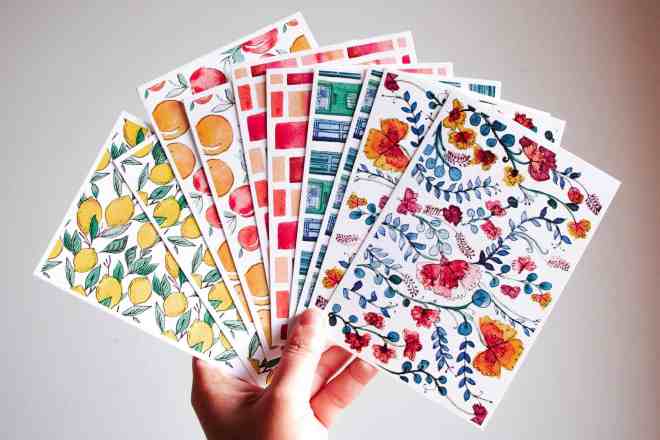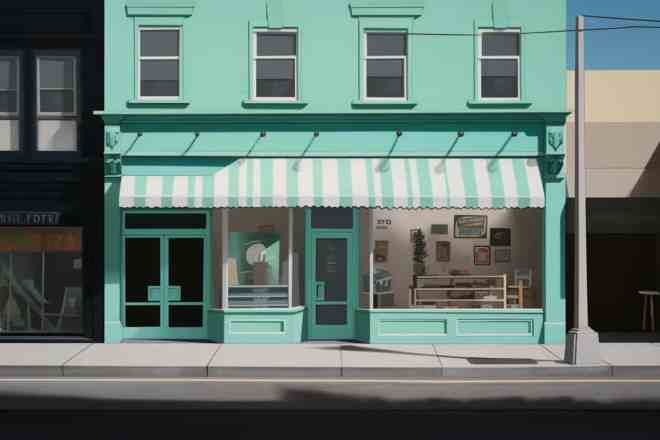While Brush Script is a font type, the term has expanded to include various handwritten styles. These stylistic characters can invoke a sense of hominess, casualness or elegance. It all depends on the typeface used and the context surrounding it. However, while they can include beautiful strokes and unique letters, a brush script font can get hard to read. All those flourishes can be a bit too much for the eye.
If there is one thing a good graphic designer knows, it’s that fonts must be readable. After all, what’s the point of having text in a design if no one can tell what it says? A font may have style, but if it’s illegible, there’s not much point in using it. Here are some great choices for brush script fonts, as well as tips for using them.
Your Best Choices for Brush Script Fonts
A good typeface is legible and stands out. Here are six brush script font options that fit the bill.
Darkline
For a font that looks breezy but is still easy to read, check out Darkline. It’s a clean typeface that still has the casualness of brushstrokes. It also goes well with blockier fonts, meaning it can have uses in many contexts as a title or subtext. Subtype Studio created the font and sells the desktop license for $18, along with multiple price points for other uses. Consider using this diverse font for the focal point of a design or in the accents.
Souther
Souther is a bit cleaner of a cursive-inspired font but still maintains that brushstroke quality that makes these handwritten fonts so attractive. It also has different options for ligatures so the letters remain legible and cohesive. Craftsupplyco — the font’s creator — recommends Souther for organizations that want an upscale and chic vibe. Access the typeface and unlimited downloads of other assets on Envato for $16.50 a month.
Bucharest
Need a wholly cursive font that’s handwritten but still legible? Try out Bucharest by Nerd Studio. This typeface combines the elegance and flourish of brush script fonts but remains legible. The creator clearly put care into spacing each letter enough to feel natural but still be easily readable. Graphic designers can purchase this great font on So Fontsy for $15.
Hey August
When most people imagine handwritten fonts, they picture cursive. However, only some people want or can even read cursive. In such a case, Hey August by Krurasan is an excellent option. The thick and bold typeface gives the impression of someone writing with a chisel-tip marker. This makes it easy to read but still includes the flourish of a brushstroke. If that sounds appealing, users can access the font for free on Dafont.
Belfast
For a less-rounded cursive font, Belfast is a fantastic option. The typeface by Hustle Supply Co. feels casual, but the slightly more angular letters make the font clean and adult. The creator also made Belfast highly customizable, with 54 swashes, 26 alternate lowercase characters, alternates and discretionary ligatures. They also note how many uses there are, from product packaging to cards. Get the font for $15 on YouWorkForThem.
Sophia
Sometimes, designers need a cutesy font they can rely on for clients who want to attract youthful clientele. Sophia is a great option for these cases. It’s a thicker brush script font, which makes it legible yet clean. The typeface has loops in the main lettering that make it feel jovial, along with curls designers can opt to put at the beginning and end of a phrase. Check out Sophia on CreativeBooster and download the font for free.
How to Find Good Brush Script Fonts
The fonts above are just six of the many thousands of brush script fonts available. While designers may find luck with those, they may also wish to use a handwritten font of their own. Here are a few tips on picking out a wonderful brushstroke typeface.
Check the Ligatures
While standard ligatures are there for legibility, discretionary ligatures are stylistic marks that are purely there for aesthetics. For example, some fonts may connect the lines on two “f”s that are next to each other. Before deciding to download a font, it’s important to check those ligatures. Do they draw too much attention, making people pay less attention to what the graphics are saying? Are they opting for style over legibility so the text is harder to read?
Instead of relying on one opinion, ask a few friends or fellow designers what they think about the font’s readability. If the ligatures are making the copy confusing, it’s not the best choice.
See If There Are Alternate Characters
Alternate characters are especially important for cursive fonts. In such a typeface, an “e” at the end of a word will look different from one in the middle. When selecting one of these typefaces, check to see if the creator included alternate characters. These will make the font much more cohesive, often heightening the readability.
On the other hand, some typefaces might not include those alternates. Does that fact impact how the font looks? Is the kerning awkward or does it still suit the content? Some alternates may also introduce issues that affect the comprehension of the project. Again, it helps to ask others for their opinions so multiple viewpoints can chime in.
Assess the Weight
Lesser font weights can strongly affect how legible a font is. While a thinner typeface may have visual appeal to the designer, they should judge if the weight will affect the reader. Is the font so thin and loopy that it becomes difficult to read? If the copy will display somewhere, does distance affect the legibility? Different weights will be appropriate for various scenarios, so judge how size and display will factor in.
Double Check for Unintended Meanings
Part of the appeal of brush script fonts is their flourishes. The curves and quick strokes make the typography appear casual or high end. However, all those additions to the standard can cause a piece of text to look like it’s saying something else. Google provides multiple examples of awkward kerning or font styles that make logos, ads, and home decor have an often unfortunately humorous second meaning.
Before sending a project to a client, check with many people to ensure the font doesn’t accidentally make the copy say anything crude or make no sense. A designer will know what the title or body text is supposed to say, but asking others for their first impression helps ensure the design is as straightforward as possible. It also prevents silly or potentially offensive mistakes.
Keeping Your Brush Script Font Readable
Above all, when using text in a design, ensuring everything is legible is critical. Typefaces with flourishes like brush script fonts are beautiful but can introduce readability issues. Additionally, the adjusted kerning and unique characters can make text unintentionally say something funny or uncouth. Double or even triple checking with others is vital to picking a readable yet stylistic.
Check out the six fonts listed above for intricate yet legible brushstroke fonts. If those don’t appeal to the designer or client, use the tips to pick out a suitable, similar typeface. With the proper attention, these flowier fonts can become clear and gorgeous.
About The Author
Eleanor Hecks is the Editor-in-Chief of Designerly Magazine, an online publication dedicated to providing in-depth content from the design and marketing industries. When she's not designing or writing code, you can find her re-reading the Harry Potter series, burning calories at a local Zumba class, or hanging out with her dogs, Bear and Lucy.


